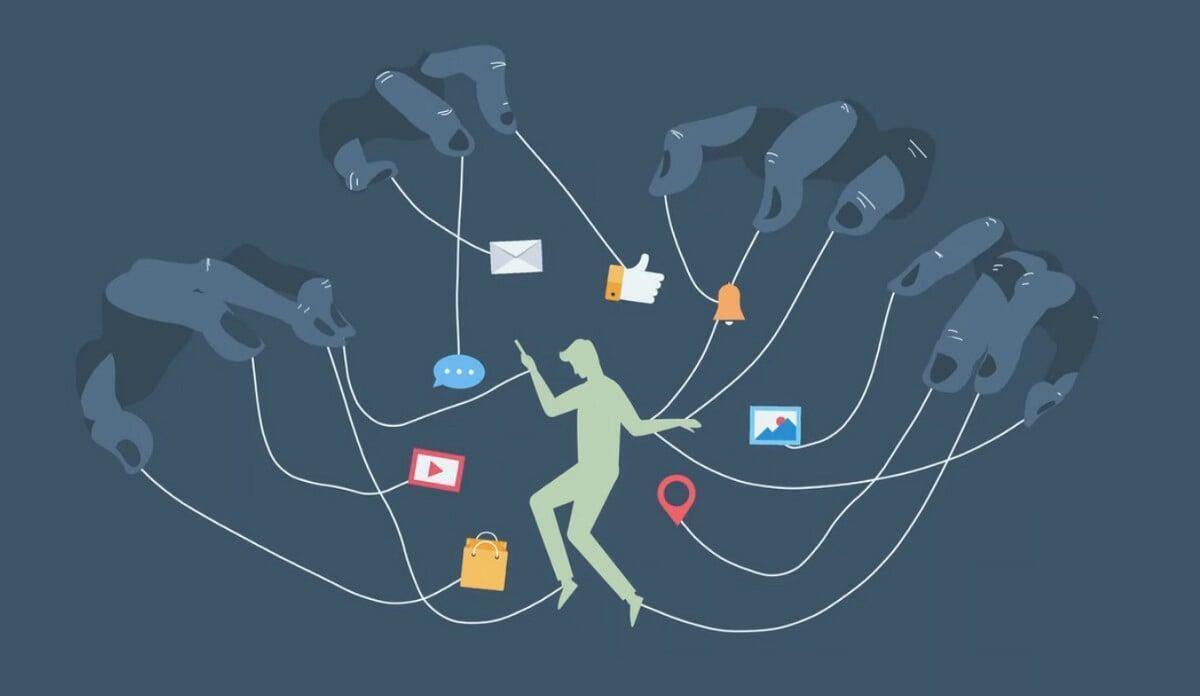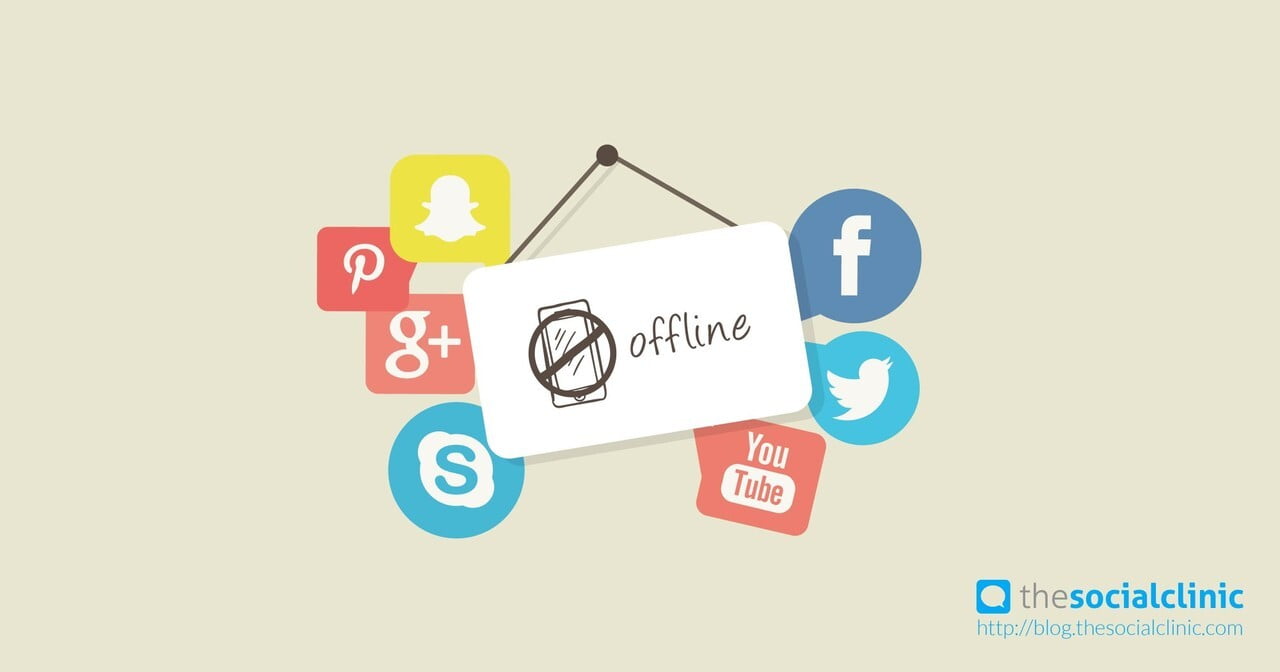The Age of Social Media Addiction: Preventing Distractions
Author: Nikki Pangborn
With near ubiquitous accessibility through our phones and laptops, social media presents a constant distraction from our work. I imagine many of you have sat down to get work done and next thing you know, you are an hour deep into your TikTok screen time, sitting in front of a blank word document. This can be hard to bounce back from especially since you feel guilty about the time that has been wasted. It is easy to be hard on yourself in those moments and pass it off as a fault of your own – you’re too easily distracted. However, social media has been carefully designed to be addictive to the average user and play on your vulnerability to distraction.

Algorithms are engineered to monitor our interactions with content to build a social media experience that is to our liking. It individualizes our feeds by tracking our likes or how long we view posts for, pushing content we show the most interest in, and maximizing our enjoyment (Montag et al., 2019). App creators have a monetary interest in making these platforms addictive. By creating a better user experience, more people are drawn to the platform, providing greater opportunity to post ads and generate revenue (Zakon, 2022).
Other features designed to keep us highly engaged include content recommendations, such as the sidebar on YouTube, and endless scrolling features (Yang et al., 2021; Montag et al., 2019). TikTok is a social media platform notorious for its endless feed, known as the “For You Page”. Instagram has now also created the “explore page” which is similarly infinite. The endless newsfeed creates a sense of “flow” in the user, which is a cognitive state typically meant to induce productivity (Montag et al., 2019). It distorts the feeling of time, making us “lost” in the task at hand. In terms of social media, we become immersed in the experience of having access to infinite content catered to our interests, which subsequently opens us up to endless rewards.
Over time, these features make social media use habitual and more enjoyable, rewarding us through stimuli such as likes, comments, or messages (Yang et al., 2021; Burhan & Moradzadeh, 2020). To make social media use addictive, platforms take advantage of the “Reward Prediction Error” that also facilitates other addictions, such as gambling (Burhan & Moradzadeh, 2020). The Reward Prediction Error operates as a feedback loop where an individual has a high anticipation of receiving a reward (based on prior experience and knowledge), causing dopamine to be released, but then no actual reward occurs. Following this errored prediction, dopaminergic neurons decrease their firing, and a negative emotional state is induced. To keep users hooked, failed reward administration must be carefully balanced amongst real distributed rewards, such as being shown content we enjoy or receiving a notification (Burhan & Moradzadeh, 2020). TikTok is a great example of this process in action. The “For You” page is effectively catered to each individual user’s interests, and what makes them feel happy or rewarded; so much so that the algorithm has received recognition for its efficacy (Zhang & Liu, 2021). However, occasionally a sad or controversial TikTok might show up in someone’s feed, causing a decrease in dopaminergic firing and leaving the user craving another rush. Inevitably, the user keeps scrolling until they feel rewarded again with content they like, and the cycle continues.
Considering all these factors, it can be extremely hard to break the habit of distraction as a student. Especially common are feelings of boredom or stress due to school, and so it is easy to turn to social media for small rewards. However, there are ways we can attempt to mitigate these distractions and stay on top of our work. One small step I have personally found to be helpful is to put my phone out of sight and out of reach. Not just hidden in my back pocket, but perhaps putting it in a room outside of where I am studying. I find myself subconsciously grabbing for my phone when I am bored of my work. Hiding my phone allows me to catch myself reaching for it and remember that I need to stay on task.
Additionally, it is important to set some time aside during the day to use social media, if it helps you relax or keep up with your peers. To keep this use more controlled, you can set specific goals such as, “I’m going to hide my phone until I finish reading two articles, then I can watch 20 minutes of YouTube while I eat lunch”. Setting specific and limited goals allows for more realistic and reasonable use and avoids complete deprivation, which would likely lead to longer use later. If this feels too difficult and you find yourself breaking your goals, you can always delete particularly distracting apps, turn off notifications, or set time limits on them in your phone’s settings. However, all these suggestions are targeted toward the use of social media on your phone. Especially now as we continue to work from home, distractions are prominent on our laptops as we do work. However, there are some chrome extensions that can help effectively reduce distractions, according to a couple empirical studies.

Lyngs et al. (2020) used qualitative and self-report data to measure the effects of two different Chrome extensions in reducing unproductive Facebook use. The first extension removes the user’s newsfeed, and the second extension limits the amount of time you can spend on an app, and sends out reminders of these limits. According to both qualitative and self-reported data, both extensions effectively limited the participants’ time spent on the website and induced more deliberate or productive use. Authors hypothesize that the latter extension works by inducing conscious control of app use, while the former is effective because it blocks distracting (or “rewarding”) stimuli. Both extensions can be accessed on the Chrome Extension Page for free, and there are a few available options.
If you are interested in completely removing your newsfeed, you can use the “News Feed Eradicator”. Conversely (or additionally), if you are interested in setting time limits on certain websites, creating schedules of when you would like to be able to access the website, or blocking specific websites altogether, you can add the “StayFocusd” or “BlockSite” extensions. A similar study was performed by Purohit et al. (2020) using the Chrome extension “NUDGE”. This hides notifications and thus eliminates rewarding, and therefore distracting, stimuli that trigger use. It also sends notifications of how long users have spent on the website, thereby replacing rewards with punishing stimuli. Additionally, it can remove other tempting stimuli such as the recommendation bar on YouTube. Results also showed that social media use was effectively reduced in participants using this extension.
In summary, it is important to remember not to be too hard on yourself when you fall into the same distractions. Apps are purposefully designed to keep you engaged by using what feels rewarding. However, there are certainly ways that we as students can try to eliminate the distractions around us and be productive. Here again is a summary of the potential ways we can do this:
- Hide your phone out of sight and out of reach.
- Set time limits on different apps through your phone settings.
- Turn off notifications.
- Set specific goals for yourself (how much time you want to spend using social media and when to allocate that time).
- Delete apps that distract you the most.
- Use chrome extensions on your computer:
- News Feed Eradicator removes your newsfeed.
- StayFocusd and BlockSite put time limits on websites, block chosen apps, and create scheduled use-times.
- NUDGE hides notifications, reminds you of the time you spent on an app, and removes use-triggers.
References
Burhan, R. & Moradzadeh, J. (2020). Neurotransmitter dopamine (DA) and its role in the development of social media addiction. Journal of Neurology and Neurophysiology, 11(7). https://doi.org/10.35248/2155-9562.20.11.507
Lyngs, U., Lukoff, K., Slovak, P., Seymour, W., Webb, H., Jirotka, M., Zhao, J., Van Kleek, M., & Shadbolt, N. (2020). 'I just want to hack myself to not get distracted'. Proceedings of the 2020 CHI Conference on Human Factors in Computing Systems. https://doi.org/10.1145/3313831.3376672
Montag, C., Lackmann, B., Herrlich, M., & Zweig, K. (2019). Addictive features of social media/messenger platforms and Freemium Games against the background of psychological and economic theories. International Journal of Environmental Research and Public Health, 16(14). http://www.doi.org/10.3390/ijerph16142612
Purohit, A. K., Barclay, L., & Holzer, A. (2020). Designing for digital detox: Making social media less addictive with digital nudges. Proceedings of the 2020 CHI Conference on Human Factors in Computing Systems. https://doi.org/10.1145/3334480.3382810
Yang, Z., Griffiths, M. D., Yan, Z., & Xu, W. (2021). Can watching online videos be addictive? A qualitative exploration of online video watching among Chinese young adults. International Journal of Environmental Research and Public Health, 18. https://doi.org/10.3390/ijerph18147247
Zakon, A. (2019). Optimized for addiction: Extending product liability concepts to defectively designed social media algorithms and overcoming the communications decency act. Wisconsin Law Review, Forthcoming. https://dx.doi.org/10.2139/ssrn.3682048
Zhang, M. & Liu, Y. (2021). A commentary of TikTok recommendation algorithms in MIT Technology Review 2021. Fundamental Research, 1(6), 846-847. https://doi.org/10.1016/j.fmre.2021.11.015